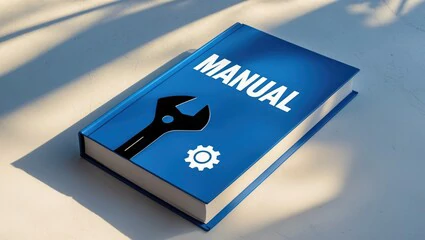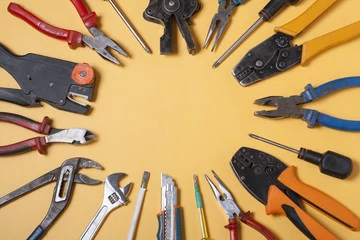Motorcycle lithium battery insulation material
main content
Proper insulation is critical for motorcycle lithium batteries to ensure safety, prevent thermal issues, and maintain optimal performance. Motorcycle lithium battery insulation materials protect against electrical shorts, temperature extremes, and physical damage. This guide explores the best insulation options, installation practices, and maintenance tips to help you safeguard your battery system.
Types of Insulation Materials
1.Polyester (PET) Films
Lightweight and durable, PET films offer excellent electrical insulation and chemical resistance. They are ideal for wrapping battery cells or separating electrodes to prevent short circuits. Their high tensile strength ensures long-term protection against abrasion.
2.Fiberglass-Based Barriers
Fiberglass composites provide superior thermal insulation and fire resistance. Products like Pyrel-Therm or Go-Therm are engineered to block heat transfer between battery cells, reducing the risk of thermal runaway. These materials are essential for high-performance applications requiring extreme temperature stability.
3.Aerogel Insulation
Aerogel, though costly, delivers unmatched thermal resistance per thickness. It’s perfect for tight spaces where minimal bulk is crucial. For budget-conscious projects, layered XPS foam or polyiso boards offer a balance of affordability and effectiveness.
4.Heat-Shrink Tubing
Adhesive-lined heat-shrink tubing creates a waterproof, abrasion-resistant seal for wiring and terminals. Choose polyolefin-based options for flexibility and UV resistance, especially in outdoor environments.
5.Neoprene or Polyurethane Foam
These flexible materials absorb vibrations and provide cushioning. Neoprene is resistant to oils and weather, making it suitable for battery casings exposed to harsh conditions.
6.Terminal Insulation Covers
Soft plastic or rubber caps protect battery terminals from corrosion and accidental contact. Look for UL-listed designs that fit snugly over positive and negative posts.
Best Practices for Installation
Prioritize Thermal Management: Combine materials like fiberglass barriers and aerogel to isolate heat-generating components. Ensure gaps between cells are filled with fire-retardant foam to prevent heat buildup.
Seal Gaps Thoroughly: Use silicone-based adhesives or high-temperature tapes to seal joints and edges. A well-sealed enclosure minimizes moisture ingress and thermal leakage.
Avoid Conductive Materials: Never use metallic or carbon-based insulators near battery terminals. Opt for non-conductive options such as PET films or fiberglass.
Test for Compatibility: Verify that insulation materials can withstand your battery’s operating temperature range (typically -20°C to 60°C).
Maintenance and Safety Tips
Regular Inspections: Check for cracks, discoloration, or loose insulation every three months. Replace damaged materials immediately to prevent exposure risks.
Clean Terminals: Use a baking soda solution to remove corrosion from terminals, then apply dielectric grease to inhibit future buildup.
Monitor Charging Conditions: Never charge lithium batteries below 0°C or above 40°C. Store batteries in a dry, temperature-controlled environment when not in use.
Conclusion
Selecting the right motorcycle lithium battery insulation materials is vital for safety and longevity. From advanced aerogel to cost-effective foams, each material serves a unique role in protecting against electrical and thermal hazards. By following proper installation techniques and routine maintenance, you can ensure reliable performance and extend your battery’s lifespan. Always prioritize certified, high-quality materials to meet industry standards and safeguard your investment.

START-STOP LITHIUM battery
Enov start-stop battery is designed to provide excellent performance for high-demand start-stop vaehicles. It adopts the third-generation intelligent lithium platform architecture to achieve technological breakthroughs in core indicators such as cycle life, environmental adaptability and energy density. Compared with the traditional lead-acid battery system, the energy efficiency is increased by 210%, the cycle life is extended by 8-10 times, and the monthly self-discharge rate is controlled within 3%. Enov's unique low-temperature battery technology makes a breakthrough in achieving stable output in the whole climate domain from -30℃ to 65℃, maintaining more than 90% of the effective capacity release under extremely cold conditions (-30℃), and maintaining 90% of the capacity in high temperature environments (65℃).
The start-stop battery series products cover the mainstream voltage platform of 12V/24V/48V, and support flexible configuration of LFP (lithium iron phosphate) and NCM (lithium nickel cobalt manganese oxide) dual-material system. All models adopt modular design to support customization of different model specifications. Enuo engineering and technical team to provide full cycle technical service support, if you need, please contact us.
Other products
UAV BATTERY
LITHIUM ENERGY STORAGE BATTERY
QUICK INQUIRY
FAQ
Access to high frequency technical questions with one click, get accurate answers on product application, after-sales policy and customization process.
Service and Support
Get the latest product specifications, explore professional OEM/ODM customization services, click to open exclusive technical support and production solutions.
Become a Partner
We sincerely invite resources to interconnect, work together for win-win development, and immediately open a new chapter of strategic cooperation!




